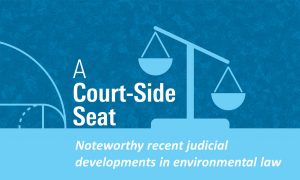This week’s round-up explores new artificial intelligence tools and their projected impact on real estate agents, key trends driving proptech innovation, barriers to adopting drones in the construction industry, and more.
Recent Measures Establish Tax Increases on Real Property in California Cities
In “Recent Measures Establish Unprecedented Tax Increases on Real Property in California Cities,” Craig A. Becker, Breann E. Robowski, Rachel B. Horsch and David W. Wright examine the array of local measures approved by California voters in the 2022 midterms, which includes an increase in city-level transfer taxes and the addition of new taxes on property in LA and Bay Area cities.
Real Estate & Construction News Round-Up (01/18/23) – Construction Inventory, 3D Printing, and Metaverse Replicas
This week’s round-up dives into projections on construction inventory in the housing market, the first 3D-printed house, a replica of South Korea’s Seoul in the Metaverse, and more.
Real Estate & Construction News Round-Up (01/11/23) – Construction Tech, Housing Market Confidence, and Decarbonization
To kick of 2023, this week’s news round-up dives into contech inventions projected to impact the industry, shifting home prices and buyer confidence, investors prioritizing decarbonization efforts, and more.
Parking Reform Takes Off on the West Coast
 Starting January 1, 2023, real estate developers in Oregon and California will no longer be required to build off-street parking facilities for certain projects located near public transit. Both states enacted new rules during the course of 2022 which are effective as of the beginning of 2023, and which seek to reduce the costs of building at least some new projects in major population centers.
Starting January 1, 2023, real estate developers in Oregon and California will no longer be required to build off-street parking facilities for certain projects located near public transit. Both states enacted new rules during the course of 2022 which are effective as of the beginning of 2023, and which seek to reduce the costs of building at least some new projects in major population centers.
Commercial Real Estate in 2023: A Snapshot
As we close out the last remaining weeks of 2022, all eyes look ahead to 2023. Below is a quick snapshot highlighting three trends and predictions that may continue to shape the commercial real estate landscape in 2023.
- Office space and the digital economy present attractive investment opportunities and potential. Even with all of the chatter about office vacancies during the last three years, according to Moody’s Analytics, “it’s important to note that none of the regions across the U.S. have seen office vacancy rates dip below their pre-pandemic Q4 2019 levels.” This might be due to creative and reimagined office spaces as the return to office continues. The hybrid work format and flexibility in spaces will continue in 2023.
- Data analytics and Proptech will continue to play a larger role, allowing property owners and tenants to collaborate to provide more efficiency, whether to achieve sustainability goals or leverage technology like immersive experiences to entice tenants to new spaces. An increase in demand for technology to solve issues will most likely continue in commercial real estate.
- ESG will continue to be a trending topic, particularly around regulatory and disclosure requirements. In 2022, we saw commercial real estate taking notice if increased ESG enforcement. In 2023, the industry will take specific and actionable steps to apply ESG (and leverage smart technology in commercial real estate) to reduce carbon footprint and greenhouse emissions in commercial buildings, collaboratively with tenants and retail locations.
A Court-Side Seat: An End-of-Year Environmental Update
As 2022 draws to a close, here is a brief description of recent environmental and regulatory law rulings, as well as new federal rulemaking proceedings.
Acquisition of Distressed Loans: Bankruptcy Considerations and the 363 Sale
There are no shortage of bankruptcy considerations that must be understood by an incoming lender who acquires a distressed commercial real estate loan and whose borrower shortly thereafter files for bankruptcy protection. For the purposes of this article, we imagine a hypothetical distressed debt buyer who has acquired the loan with the goal of eventually obtaining the underlying property and who may be distressed (pun intended!) by the bankruptcy filing. While often considered an impediment to acquisition efforts, we believe that bankruptcy presents significant benefits and opportunities for the strategic loan-to-own investor.
The G2G Year-End Roundup (2022)
Our year-end roundup highlights the top-read Gravel2Gavel posts from 2022. Our authors addressed the legal implications for a variety of hot topics and market disruptions, providing deep industry insights that spanned Metaverse real estate investments, economic sanctions in Russia, and cybersecurity for smart buildings.
Real Estate & Construction News Round-Up (12/07/22) – Home Sales, EV Charging Infrastructure, and Office Occupancy
This week’s round-up explores decreasing home sales, electric vehicle charging stations, office occupancy levels, and more.





